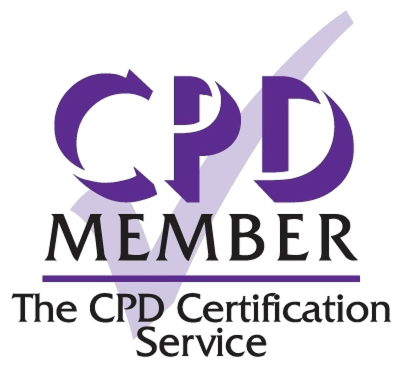Write Up: Helping People Who Have Survived a Traumatic Brain Injury
)
On the 16th of March, Barbara Wilson, OBE, a clinical neuro-psychologist and the founder of the Oliver Zangwill Foundation for Rehabilitation, hosted a session entitled “Helping People Who Have Survived a Traumatic Brain Injury” as part of Neurology Virtual. During her talk, she explained the rehabilitation process that patients go through at the Oliver Zangwill Foundation and used a case study to highlight the success of their strategies.
In addition to founding the Oliver Zangwill Foundation, Barbara has written several books on Neuro-psychology, including Life After Brain Injury: Survivors’ Stories (2013), Neuropsychological Rehabilitation: The International Handbook (2017) and Case Studies in Neuropsychological Rehabilitation (1999). In 1998 she was awarded an OBE for forty years’ worth of service to the field of neuropsychology and today the BPS Barbara Wilson Lifetime Achievement Award is named after her and is the UK’s highest professional award for clinical neuropsychologists.
She opened her webinar by defining just what exactly cognitive rehabilitation is. The following quote is one which she finds particularly valid:
Using that definition as a framework, she went on to explain that cognitive rehabilitation could be described as a process whereby people with a brain injury work together with professional staff and others to remediate or alleviate cognitive deficits arising from neurological insult. Neuropsychological rehabilitation is similar to that, but broader, concerning itself with cognitive, emotional, psychosocial and behavioural defects caused by an insult to the brain.
There are a few things which Barbara wanted to emphasise to debunk any misconceptions:
-
Neuropsychological rehabilitation is not synonymous with recovery, as it does not restore patients to the way they were before.
-
Neuropsychological rehabilitation is not synonymous with treatment as it does not involve surgery or drugs.
-
The rehabilitation process is not focused on helping people to score better on tests, to remember lists of words or make them faster at detecting stimuli.
She clarified that rehabilitation is a two-way interactive process. It’s about helping people with disabilities achieve their optimum level of wellbeing, reducing the impact of their health problems on everyday life and helping them to return to their own most appropriate environments.
Good Clinical Practice
At the Oliver Zangwill Foundation, they use the following principles to ensure the best clinical practice for their employees:
-
Provide Therapeutic Milieu: patients need a social environment in which they feel safe.
-
Setting Goals: the goals for patient rehabilitation should be meaningful and functionally relevant.
-
Ensure Shared Understanding: it is important for patients to be understood and for them to understand those within their environment.
-
Apply Psychological Interventions: these are important, for example, in the event of mood issues.
-
Manage Cognitive Impairments: this can be achieved through compensatory strategies and retraining skills.
-
Working with Families and Carers: it’s important to work cooperatively with the people in a patient’s life so that everybody understands their needs and is working towards the same goals.
These tried and tested principles have been found to be most successful when it comes to creating the best outcome for a patient. Above all, it remains important for staff to remember that cognition is not divorced from emotion, motivation and other non-cognitive function. Feelings play a critical role in determining how we think and behave.
Understanding the problems faced by survivors of brain injuries
People who have suffered a traumatic brain injury (TBI) can experience a range of different problems. The experiences of TBI survivors can be very different and it’s important to be mindful of all the possible effects that can apply. Here is a list of the problems facing TBI survivors:
-
Motor problems: these are the best understood and the most likely to be treated.
-
Sensory problems: these most often manifest as vision and touch-related problems. Survivors may also experience hearing problems, though this is less common.
-
Cognitive problems: this encompasses problems with memory, attention, communication, planning, organisation, reasoning, perception, spatial awareness and so on.
-
Behavioural problems: this can lead to temper outburst, shouting, swearing, aggressive behaviour, disinhibition, poor self-control and a refusal to cooperate.
-
Social problems: it can be very hard for TBI survivors to re-master their social skills.
-
Emotional & psycho-social problems: such as anxiety, depression, anger, fear, distress, grief and low self-esteem
-
Pain: some survivors will be left with some level of pain, meaning that they need to learn pain management techniques.
-
Fatigue: similarly, they can be left with reduced energy levels, leading to fatigue.
Though all these problems can pose severe difficulties, in everyday life it is most often the cognitive, emotional and behavioural problems which are the most handicapping for survivors, rather than the physical problems. This is reinforced by the following quote:
In order to support survivors as much as possible in their everyday life, there are three main aspects to rehabilitation:
-
Helping them to learn more effectively.
-
Helping them compensate for their problems.
-
Adjusting the physical and verbal environment to reduce the need for cognition.
Each of these was covered in detail during the session, starting with three different strategies for helping TBI survivors to learn more effectively: spaced retrieval, errorless learning and vanishing ques.
Space Retrieval (a.k.a. Expanded Rehearsal)
Using this strategy, you present the patient with some material to be remembered, this might be a telephone number, an address or anything else along those lines. The patient is asked to immediately recall the information that was presented to them to ensure that they have been able to retain it. They’re then asked to recall it again after a delay of one or two seconds. You repeat this process as often as you can, building the gap between each recollection every time. The patient is only given the information once but undergoing this process they will gradually build up a retention interval.
Errorless Learning
Though many learning systems are based on trial-and-error techniques, errorless learning is built upon the principle of preventing people from being able to make mistakes (as far as possible) when acquiring new information. There are various methods through which this can be conducted:
-
Providing clear written instructions for every step of a process
-
Giving the patient clear verbal instructions
-
Directly guiding them through something yourself
Barbara herself (working in collaboration with renowned psychologist Alan Baddeley) was the first person to introduce the errorless learning system to neuropsychology. In 1994, the two of them posed the question “Do people with amnesia learn more when prevented from making mistakes during learning?” They tested this and concluded that errorless learning was indeed more effective than its errorful counterpart. The advantage is particularly notable with people with amnesia who forget less with errorless learning. It is not productive to make people with amnesia guess.
The principle was applied to real life problems and the following are examples of the successes errorless learning have generated:
-
It was tested on a man with agnosia and severe amnesia to help him remember objects.
-
It was used to help a man with Korsakoff’s Syndrome learn how to program an electronic organiser.
-
It helped a man who had had a thalamic stroke to successfully remember names.
-
It was used to help a man suffering from post-traumatic amnesia with orientation items.
Vanishing Ques
This is a process through which ques are provides to aid the patient and then gradually faded out. This was first reported as an effective technique by Elizabeth Glisky in 1986. A patient would be asked to complete a task and the first time they do it, they’d have a que telling them exactly what to do. However, each successive time that they are asked to do the task, the que will become smaller and smaller. Barbara gave the example of trying to help somebody remember how to spell the name Caroline. The first time, you’d have the name on the que and the patient would essentially copy it. However, the second time, they’d have a que which said only Carolin_, then Caroli__ and so on, with the patient having to recall more and more each time.
Helping survivors compensate for their problems and adjusting their environment
This method of support is one which Barbara believes will only improve over time as technology plays a significant role. Many compensatory aids and voice assistants are available to TBI survivors and these types of products can create positive life-changing results. Examples include:
-
Clocks which indicate what day of the week it is.
-
Automated car voice reminders.
-
Pill box reminders.
-
Even simple conveniences like smart phones and Google Calendar can have large, positive impacts.
The range of products available to patients which can help to compensate for their problems is very broad and these are just a few examples. As new technologies are released every day, so too are new methods made available to those living with the problems caused by TBI. Barbara’s book, Memory Rehabilitation covers the subject extensively.
The emotional consequences of TBIs
It’s important to recognise the emotional problems that many TBI survivors face. Identifying these problems will help to facilitate understanding as well as making it easier to identify the best cause of rehabilitation. The following is a list of very common symptoms:
-
Anxiety
-
Depression
-
Post-traumatic stress disorder (PTSD)
-
Mood swings
-
Obsessive compulsive disorder (OCD)
-
Stress
Though the majority of survivors experience these problems, an individual may have every one of them or they might have none at all. Often survivors will believe that they are going crazy and need to be reassured that what is happening to them is normal for somebody with a TBI. They can suffer from disassociation and life can start to feel like a dream to them and they can develop a fear of repeating themselves (due to memory loss). Dealing with all of this can be very exhausting.
There are many ways to support survivors as they go through this. Anxiety is probably the easiest (and cheapest) problem to be managed. Providing counselling and advice, running support groups and arranging one-on-one psycho-therapy sessions can all be effective. In some cases, the patient can respond positively to being told the specific reasons for the changes they are experiencing. It reassures them that it is not due to any personal failing and helps to prepare them for what they may experience in future.
Cognitive-behavioural therapy (CBT) is very effective for helping survivors to overcome their emotional problems. In the UK, this is the most commonly used solution, though it is by no means the only option. Several models have built on top of the groundwork laid by CBT and now options like compassion focused therapy (CFT) and acceptance and commitment therapy (ACT) are being used more and more.
Support groups can also be very effective and at the Oliver Zangwill Foundation, they work towards the following aims:
-
To increase understanding of the emotional consequences of TBIs.
-
To help patients learn about factors which affect mood.
-
To help patients to understand their emotions.
-
To help patients to manage bad emotions.
Catherine: A Case Study
In order to highlight the effectiveness of the methods used at the Oliver Zangwill Foundation, Barbara shared the story of a patient named Catherine. To protect her identity, her name and a few details of the story have been adjusted.
Catherine is the youngest of four children. She was nineteen years old when she came to the Oliver Zangwill Foundation and she had sustained a TBI following a violent assault from a former boyfriend. She scored an 8 out of 15 on the Glasgow Coma Scale (GCS), which put her on the border between severe and moderate brain injury. In addition to the TBI, she had suffered damage to multiple organs (which required blood transfusions) and had multiple orthopaedic injuries, including a fractured pelvis. Early CT scans showed small subdural haematomas on both frontal lobes.
After a week at her local hospital, she was transferred to a regional hospital for acute management for three months, followed by a further three months in a rehab unit. After she had been discharged and allowed to return home, she was seen as an outpatient by a neuropsychologist and a speech and language therapist. They identified the need for additional support for her to be able to overcome her cognitive and emotional problems. As such, she was sent to the Oliver Zangwill Foundation.
The first step was to perform a cognitive assessment on Catherine. This process allowed them to identify the following problems:
-
Her speed of information processing was impaired.
-
She found it hard to focus her attention and concentrate.
-
Her memory and learning skills had declined.
-
Her executive functioning ability (i.e. planning and organisation) needed to improve.
-
She was also impaired on story recall, word fluency and naming.
When assessing her mood and levels of emotional adjustment, they identified that Catherine’s self-confidence levels were worryingly low, and she had very little self-esteem. She was highly critical, to the extent that she even blamed herself for the assault. Thankfully, despite these issues, Catherine’s social skills remained strong, and she had no behavioural problems. Her attitude was very positive, and she was highly motivated to improve.
When Catherine came to the Oliver Zangwill Foundation, it was important to identify what she expected from her rehabilitation and to identify the expectations of her family too. After discussing it, they determined that:
-
Catherine wanted to make sense of the consequences of her BTI on her life.
-
Catherine wanted to regain her confidence and be able to study again.
-
Her family wanted to manage the psychological impact of the assault and consequent TBI.
-
Her family wanted to be able to support Catherine and help her to return to a more normal life.
-
Her family also wanted to gain a better understanding of the consequences of Catherine’s BTI themselves.
Once these expectations had been understood, Catherine and her family had to set goals to work towards. These were the six goals that they chose between them:
-
To understand the consequence of the TBI.
-
To find strategies to support Catherine’s study skills.
-
Explore voluntary work opportunities for Catherine.
-
To understand Catherine’s memory problems and find ways to help her remember better.
-
For Catherine to feel more confident in herself and relaxed in her mood.
-
For Catherine to develop her confidence and skills in cooking and using public transport.
It is very common for patients at Oliver Zangwill to set themselves six or seven goals and over the course of sixteen weeks, they would all work together to ensure that these goals could be met. The first step towards achieving these goals was to get Catherine onto a support group dedicated to helping people understand brain injuries, as well as a few other psycho-educational groups. She also had individual psycho-therapy sessions.
In order to improve her memory, she was introduced to external aids, rehearsal strategies and internal strategies (as detailed above). She was also introduced to various methods to help her manage her study skills, such as allowing herself more time, reducing the number of distractions, taking in bite sized chunks and repeating information for her own clarification.
Through the support provided to her, Catherine was able to come to terms with the memory difficulties facing her. In her own words, “Information in not so much as everybody else, what goes in stays in, but getting it out is really hard.”
In order to help her with her memory, she was given a notebook. It was used to store information like appointments she needed to keep, phone numbers she needed to call and so on. The memory notebook system was developed over time and eventually became a more thorough memory and planning system. In the end, she had a pink filofax which consisted of the following sections:
-
A to-do list.
-
A diary section.
-
A log of her successes so that she could see her progress.
-
Contact details for the important people in her life.
-
As shopping list section.
-
General cooking tips.
After this, they began a twelve week integration phase. During this period, patients come to the centre two days a week, while the rest of the time they would try to resume their former day-to-day behaviours. At this point in the process, Catherine’s biggest concern was whether or not she would be able to complete a course at college. Her course tutor had arranged a one-day-a-week attendance regime on the college course she’d attended prior to the assault. This gave her an opportunity to try out the cognitive strategies she’d developed on the programme.
To help her reach her self-confidence goals, she started to attend CFT sessions. Here a graded approach was used to build her skills and confidence in both cooking and public transport use.
Given her difficulties with interpreting written instructions, Catherine was helped to trail recipes in which the information was presented to her in different ways. Here are a few of the different approaches they tried:
-
Pictorial cooking guides
-
Step by step lists with tick boxes.
-
Recipes with short, one-line instructions.
As it happens, these were not particularly helpful for Catherine but she did find a strategy which was most useful for her: reading recipes and then re-writing them in her own words.
With public transport, her biggest fear was getting lost in unknown areas. In order to help build up her skills, she was accompanied on a trip to Cambridge, which, for reference’s sake, was approximately seventeen minutes away. During this time, she was shown the procedure for finding train times, buying tickets, finding the correct platform and using landmarks to navigate to her destination.
The following week, her filofax was very helpful when she repeated the journey. Though an occupational therapist was there to shadow her, this was largely done independently. Although she was initially quite apprehensive about this trip, she made the journey successfully and was satisfied with her performance. It was recommended that she continue to receive support from an occupational therapist to help her continue to make journeys in the local area.
At the end of her time at the Oliver Zangwill Foundation, she was given a final task: she had to prepare a lunch for the rest of her cohort. This was an appropriate task as it served as a vehicle to bring together various areas of her work, including the use of the filofax, her cooking skills, her recipe adaptation, her use of public transport and her route-finding abilities. She coped really well with the task and it was noted that her confidence levels had increased significantly since the early days of the programme. She sought assistance from her therapist on fewer occasions and independently problem solved more than once. She received good feedback and felt proud of herself for completing this task.
During the integration phase, she also took part in a work placement. To help her try and find possible areas of interest, she was allowed to work in a clinic helping elderly people. She came in twice a week for ninety-minute shifts. Her employers were very pleased with her work and gave very positive feedback. They found her to be very personable and pleasant to be around.
When reviewing the case, her family believe that the rehabilitation had been successful, and the goals had been met. They used models from memory therapy, psychotherapy and executive rehabilitation to help Catherine use her existing skills more efficiently and to compensate for her deficits.
Today, Catherine is currently helping a family member run a family business. This is a short-term plan and she is keen to get back into independent living in the future.
Final thoughts
Catherine is just one of many people to have benefitted from the rehabilitation processes at the Oliver Zangwill Foundation. The approach used for Catherine is particularly useful for those who struggle with severe difficulties because of a TBI.
Barbara closed with a quote which has always resonated with her and inspired her in her career:
Barbara Wilson’s session is still available to watch in its entirety via our On Demand system. Watch it now for more information about helping survivors of traumatic brain injuries! It’s only available until the 16th of April.



